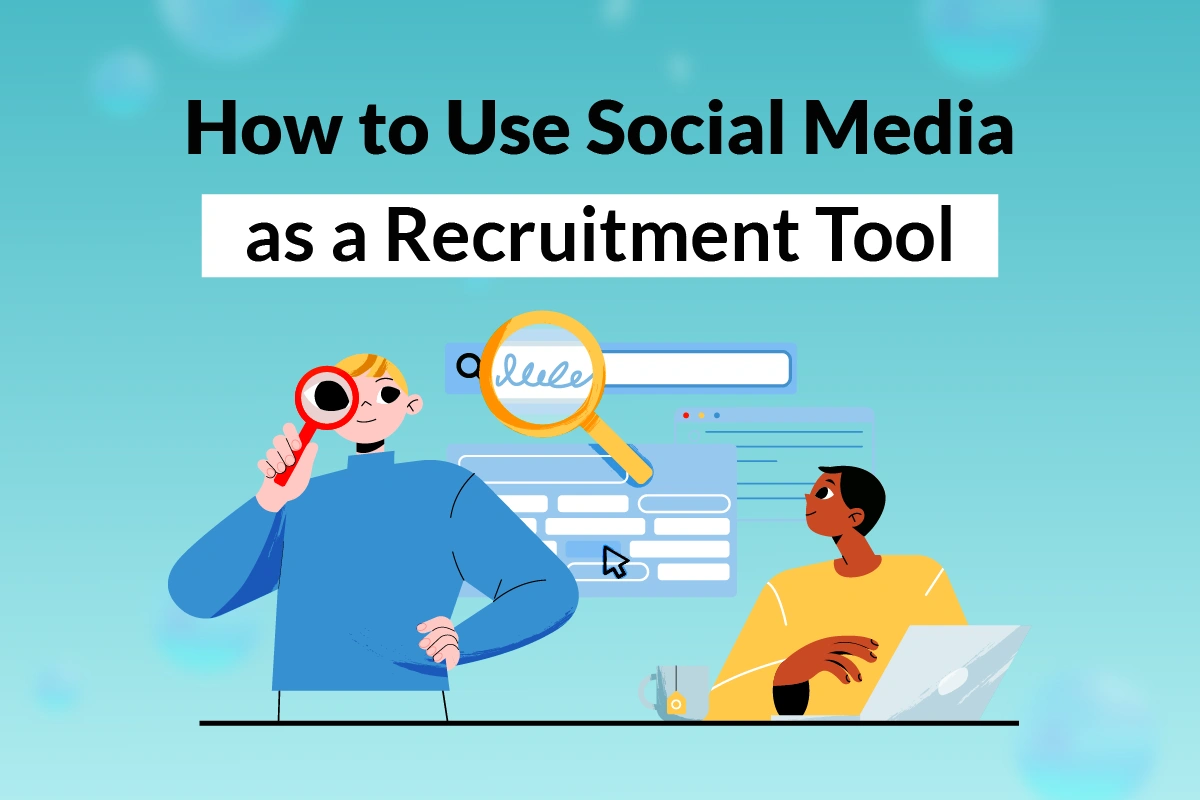Social media platforms have evolved beyond just being channels for personal connections and entertainment. They now serve as powerful tools for businesses to reach their target audience, build brand awareness, and engage with potential customers.
Additionally, social media has proven to be an invaluable resource for recruitment, allowing companies to contact talent and showcase their employer brand.
In this article, we will explore in-depth how to effectively use social media as a recruitment tool, enabling businesses to attract top-notch talent and gain a competitive edge in the job market.
Here are 7 crucial steps on how to use social media as a recruitment tool:
- Step 1: Choose the Right Social Media Platforms
- Step 2: Define Your Recruitment Goals
- Step 3: Optimize Your Social Media Profiles
- Step 4: Build an Effective Employer Brand on Social Media
- Step 5: Develop a Content Strategy
- Step 6: Engage with Your Audience
- Step 7: Leverage Social Media Advertising
- Step 8: Track and Analyze Results
- To Sum Up,
Step 1: Choose the Right Social Media Platforms

The first and fundamental step in using social media for recruitment is selecting the appropriate platforms. They should align with your recruitment objectives and target audience. Different social media platforms cater to distinct demographics and professional interests.
Here are five popular social media platforms to use as a recruitment tool:
- LinkedIn: As the leading professional networking platform, LinkedIn is an excellent choice for attracting white-collar professionals and connecting with industry peers. It is ideal for most industries, including finance, technology, and consulting.
- Facebook: With its extensive user base, Facebook offers a diverse audience representing various industries. Companies from retail to tech can leverage Facebook to showcase their employer brand and engage with a broad spectrum of potential candidates.
- Twitter: Twitter’s real-time nature and fast-paced conversational experience make it appealing to tech-savvy candidates and industries related to news, media, and technology.
- Instagram: This visually-oriented platform is perfect for showcasing company culture, employee experiences, and behind-the-scenes insights. Creative industries, such as fashion, design, and entertainment, can significantly benefit from Instagram.
- YouTube: As the leading video-sharing platform, YouTube is a valuable resource for creating video-based recruitment content. Companies can share engaging company videos, employee testimonials, and informational videos relevant to their industry.
Step 2: Define Your Recruitment Goals

Before launching social media recruitment efforts, it is crucial to define your specific objectives. By doing so, you can ensure that your campaigns are aligned with your overall recruitment strategy. Some common recruitment goals include:
- Increasing brand visibility: Enhancing your company’s social media presence is a powerful approach to attracting passive candidates with a genuine interest in your industry, culture and values—representing a highly effective facet of inbound recruiting.
- Attracting top talent: Social media allows you to showcase your company culture, employee benefits, and unique selling points. This will make your organization more attractive to top-tier candidates.
- Strengthening your employer brand: Creating a positive employer brand can significantly impact candidates’ perceptions of your company. And this will influence their decision to apply for job openings.
Step 3: Optimize Your Social Media Profiles

A professional presence on social media is vital to make a good impression on potential candidates. Therefore, you should ensure that your company profile on each platform is consistent and portrays your brand identity effectively. Key aspects of profile optimization include:
- Highlighting your employer brand and company culture: Use compelling visuals, employee testimonials, and stories that reflect your company’s values and workplace environment.
- Incorporating relevant keywords and hashtags: Utilize industry-specific keywords and popular hashtags to increase the discoverability of your posts and job openings.
Step 4: Build an Effective Employer Brand on Social Media

Creating a strong employer brand is perhaps the most critical aspect of using social media for recruitment. Your employer brand represents your company’s reputation as an employer and its value proposition to potential candidates. To build an effective employer brand on social media:
- Showcase your company’s values and mission: Share content that aligns with your company’s core values and showcases its vision for the future.
- Highlight employee experiences: Feature employee stories, successes, and milestones to humanize your company and make it relatable to potential candidates.
- Present your workplace culture: You should share photos and videos from company events, team outings, and day-to-day activities. Then, you will give candidates an insight into your work environment.
- Engage with current employees: You should encourage other employees to share their experiences and opinions on social media. This not only boosts morale but also demonstrates a positive work culture to potential candidates.
Step 5: Develop a Content Strategy

An engaging content strategy is vital for maintaining an active presence on social media. You can mix various types of content to keep your audience interested. Some content ideas for your social media recruitment strategy include:
- Job Postings: Share your job openings with compelling descriptions, qualifications, and application instructions.
- Industry News and Insights: Share relevant industry news and insights to position your company as a thought leader.
- Employee Testimonials: Feature short quotes from employees that discuss their working experiences at your company.
- Behind-the-Scenes: Offer a sneak peek into day-to-day operations and showcase the people behind the scenes.
- Polls and Surveys: Conduct polls and surveys to gather feedback from your audience and encourage interaction.
- Videos and Live Streams: Use video content to deliver engaging messages, showcase your workplace, and host live Q&A sessions with current employees.
Step 6: Engage with Your Audience

Actively interact with your audience to build meaningful connections and foster relationships with potential candidates. Some strategies for engaging with your audience include:
- Responding to comments, messages, and inquiries promptly: Show that you value your audience’s input and are readily available to address their queries.
- Acknowledging and sharing user-generated content: Recognize and appreciate any content shared by employees or candidates about your company.
- Encouraging discussion and participation: Pose questions, create polls, and initiate conversations to encourage active participation within your social media community.
Step 7: Leverage Social Media Advertising

While organic reach on social media is valuable, incorporating paid advertising can significantly enhance the visibility of your job postings and employer brand. To leverage social media advertising effectively:
- Set clear objectives for each ad campaign: Whether it’s driving applications for a specific job opening or increasing brand awareness, defining your campaign objectives will help you measure success accurately.
- Create compelling ad content: Craft engaging ad copy and visuals that entice candidates to click and learn more about your company and job opportunities.
- Monitor and optimize ad performance: Regularly analyze your ad campaigns’ performance and make adjustments to improve results. A/B testing can help you determine which ad elements are most effective.
Step 8: Track and Analyze Results

Measuring the effectiveness of your social media recruitment efforts is crucial for refining your strategy and achieving optimal results. Use analytics tools provided by each social media platform to track key metrics such as:
- Engagement: Measure likes, comments, shares, and other interactions to understand how well your content resonates with your audience.
- Reach and Impressions: Evaluate how many people have seen your posts and the potential visibility of your content.
- Click-Through Rate (CTR): Assess how effective your call-to-action (CTA) is in driving traffic to your website or job listings.
- Conversion Rate: Measure the percentage of users who completed desired actions, such as applying for a job or signing up for a newsletter.
To Sum Up,
To make the most of social media as a recruitment tool, it is essential to choose the right platforms, define clear recruitment goals, optimize your social media profiles, and build an impressive employer brand.
And regularly tracking and analyzing the results will help you refine your strategy and continuously improve your social media recruitment success.
Ready to revolutionize your recruitment process? Post your job openings on our platform today to find your next top talent! Embrace the power of social media and stay ahead in the competitive talent market!

